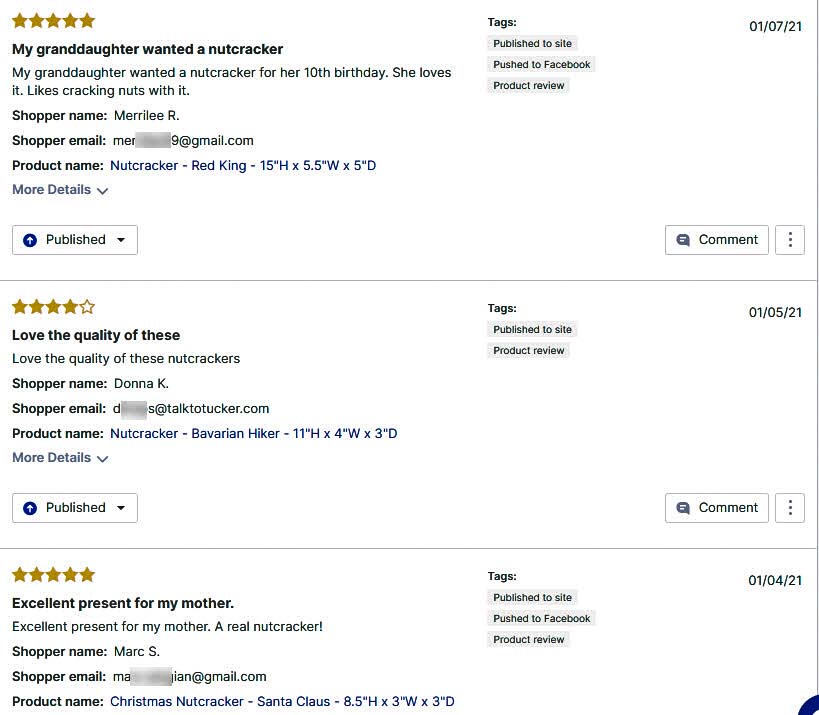The Origins of the German Nutcracker Tradition
German Nutcrackers have a history that spans several centuries, dating back to the late 17th century. Crafted in the Ore Mountains region, also known as Erzgebirge, these wooden figurines first appeared as simple, functional tools used for cracking hard-shelled nuts. But do you know what developed this functional tool into a beloved holiday decoration?
Legend has it, nutcrackers were given as keepsakes to bring good luck to families and protect their homes. The fierce-looking countenance of the nutcracker symbolized power and strength, which was believed to guard the household from evil spirits and danger. Over time, these utilitarian objects transformed into ornamental figures, evolving into symbols of German craftsmanship and holiday traditions.
“Nutcrackers are representative of the old German folklore whereby these wooden figures are guardians of the house and protectors from evil and danger.”
The Process of Crafting German Nutcrackers: An Art Form
Handcrafting nutcracker figures is a highly skilled art form, deeply rooted in German tradition. So, what differentiates a genuine German nutcracker from others?
True German nutcrackers are completely handcrafted using local woods such as pine, ash and beech. Precision, patience, and passion are key elements behind this elaborate craft. Each part of the nutcracker is individually shaped, polished, painted, and assembled, offering a high level of detail that enhances their appeal and value. It’s more than just a piece of wood; it’s a testament to the artisan’s skill and dedication.
“Each nutcracker carries with it a piece of the artisan’s heart, exemplifying the supreme craftsmanship and precision that is synonymous with German tradition.”
Unveiling the Symbolism: What Does a Nutcracker Represent?
Have you ever wondered why nutcrackers often resemble soldiers, kings, and other authorities?
In addition to their traditional role as household protectors, nutcrackers typically represent authority figures. This is largely due to their strong, powerful appearance, which aligns with their protective symbolism. Figures of soldiers, kings, knights, and policemen are popular, each donning intricately detailed uniforms and wielding weapons or staffs. This portrayal further emphasizes the protective role these figures hold, symbolically warding off negative influences.
“Beyond their festive charm, nutcrackers bear a deeper meaning – they symbolize power, protection, and authority, reflecting values cherished in German traditions.”
How German Nutcrackers Became Synonymous with Christmas Celebrations
With their transformation from a utilitarian household tool to an ornamental figure, German Nutcrackers eventually found a special place in Christmas celebrations. The question remains: how did these figures become so integral to the holiday spirit?
The integration of nutcrackers into Christmas celebrations can be credited to a combination of cultural significance and the eye-catching aesthetic these figures bring to holiday decorations. Their embodiment of German tradition and folklore combined with their detailed, handcrafted charm made them a delightful addition to any festive setting. Moreover, the nut-opening action became a fun and interactive Christmas tradition for families, especially for children awaiting their turn to crack a nut.
Over time, the popularity of nutcrackers surged beyond German borders. From Europe to America, people started embracing these fascinating figures as a part of their Christmas tradition. The nutcracker became not just a symbol of German craftsmanship, but a universal icon of the holiday season.
“German Nutcrackers transcended their local cultural significance, evolving into a universal symbol of Christmas festivity.”
Infusing German Nutcracker Tradition into Your Own Festive Decor
Now that you’ve delved into the rich history and meaning behind German Nutcrackers, wouldn’t it be wonderful to incorporate this authentic tradition into your own festive decor? Let’s see how you can do it.
Start by selecting a nutcracker that resonates with you – could be a traditional soldier, a king, or a distinctively modern variant, the choice is completely personal. Position your nutcracker(s) on your mantelpiece, dining table, or Christmas tree area – places they can stand guard and present their charisma. Pair them with other festive accents like pine cones, twinkling lights, and tinsel to create a warm, welcoming holiday atmosphere.
Remember, adding a nutcracker to your Christmas decor is not just about aesthetics. It’s about embracing an age-old tradition that encapsulates protection, good luck, and the festive spirit. As you place your nutcracker in your home, think about the hundreds of years of history you’re becoming a part of.
“Embracing the German Nutcracker tradition is more than festivity. It’s celebrating history, craftsmanship, and a symbol of protection.”
Final Thoughts
In this piece, we embarked on a journey deep into the heart of German traditions, focusing on the charming and symbolic German Nutcracker. From the origins and craftmanship to symbolism and integration into Christmas celebrations, we’ve unveiled the layers of cultural significance embedded in these fascinating figures. The integration of these nutcrackers into your own holiday decor not only adds aesthetic charm but also links you to a centuries-old tradition of celebrating protection, luck, and the festive spirit. As we exit this journey, reflect on how incorporating such pieces of history into your celebrations can enrich your understanding and appreciation of global cultures and traditions.







